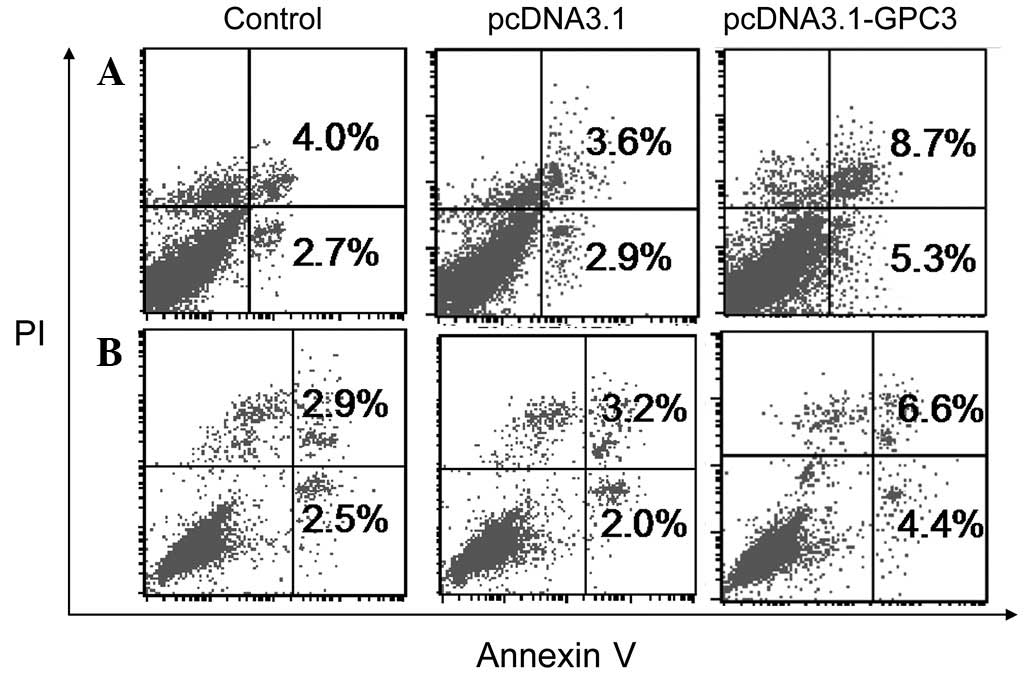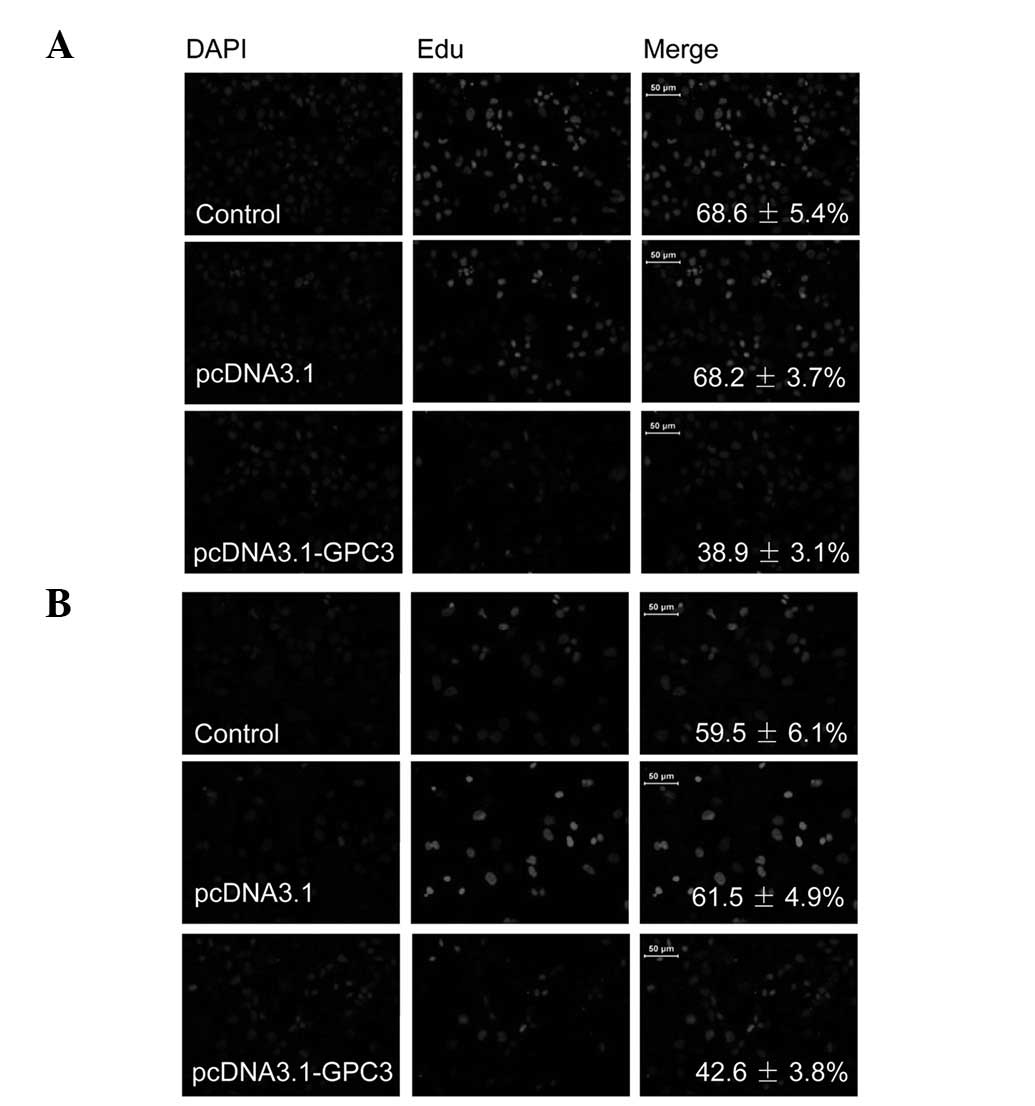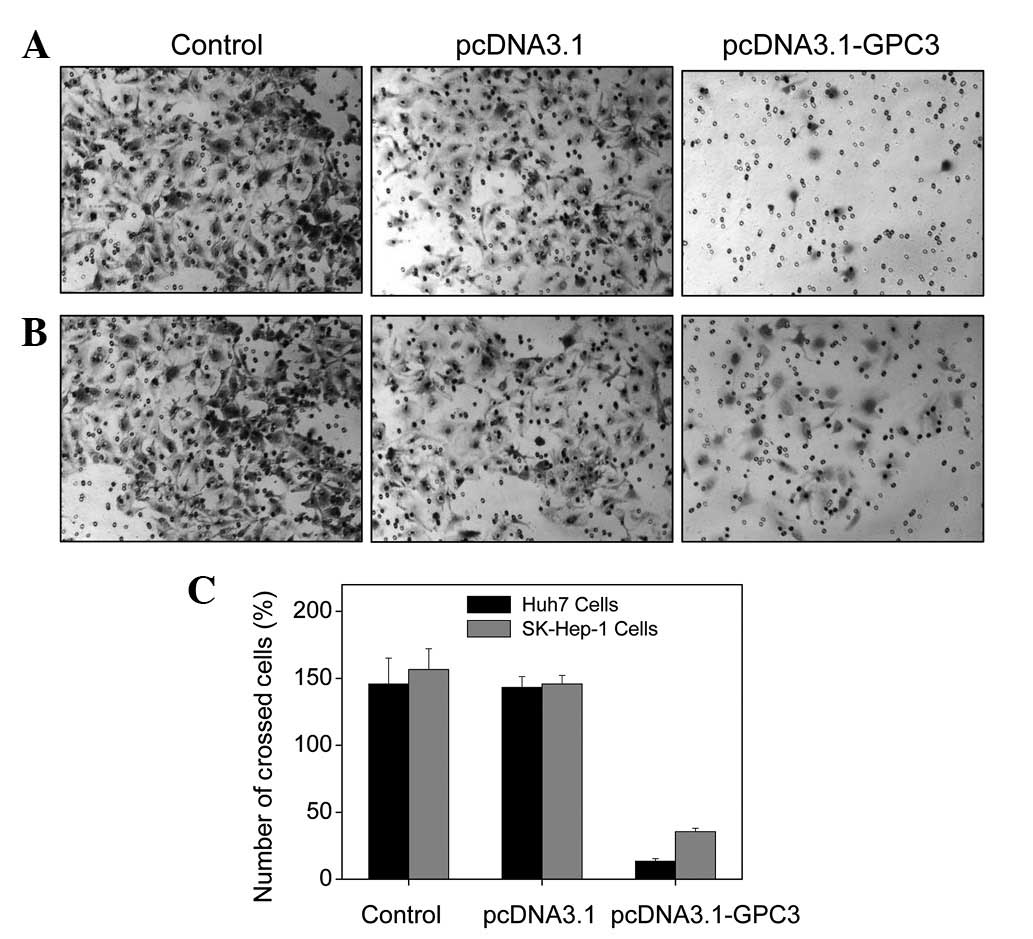|
1
|
El-Serag HB and Rudolph KL: Hepatocellular
carcinoma: epidemiology and molecular carcinogenesis.
Gastroenterology. 132:2557–2576. 2007. View Article : Google Scholar : PubMed/NCBI
|
|
2
|
Yuen MF and Lai CL: Serological markers of
liver cancer. Best Pract Res Clin Gastroenterol. 19:91–99. 2005.
View Article : Google Scholar : PubMed/NCBI
|
|
3
|
Liu H, Li P, Zhai Y, et al: Diagnostic
value of glypican-3 in serum and liver for primary hepatocellular
carcinoma. World J Gastroenterol. 16:4410–4415. 2010. View Article : Google Scholar : PubMed/NCBI
|
|
4
|
Akutsu N, Yamamoto H, Sasaki S, et al:
Association of glypican-3 expression with growth signaling
molecules in hepatocellular carcinoma. World J Gastroenterol.
16:3521–3528. 2010. View Article : Google Scholar : PubMed/NCBI
|
|
5
|
Yan B, Wei JJ, Qian YM, et al: Expression
and clinicopathologic significance of glypican 3 in hepatocellular
carcinoma. Ann Diagn Pathol. 15:162–169. 2011. View Article : Google Scholar : PubMed/NCBI
|
|
6
|
Iglesias BV, Centeno G, Pascuccelli H, et
al: Expression pattern of glypican-3 (GPC3) during human embryonic
and fetal development. Histol Histopathol. 23:1333–1340.
2008.PubMed/NCBI
|
|
7
|
Hippo Y, Watanabe K, Watanabe A, et al:
Identification of soluble NH2-terminal fragment of glypican-3 as a
serological marker for early-stage hepatocellular carcinoma. Cancer
Res. 64:2418–2423. 2004. View Article : Google Scholar : PubMed/NCBI
|
|
8
|
Capurro MI, Xiang YY, Lobe C and Filmus J:
Glypican-3 promotes the growth of hepatocellular carcinoma by
stimulating canonical Wnt signaling. Cancer Res. 65:6245–6254.
2005. View Article : Google Scholar : PubMed/NCBI
|
|
9
|
Capurro MI, Xu P, Shi W, Li F, Jia A and
Filmus J: Glypican-3 inhibits Hedgehog signaling during development
by competing with patched for Hedgehog binding. Dev Cell.
14:700–711. 2008. View Article : Google Scholar : PubMed/NCBI
|
|
10
|
Midorikawa Y, Ishikawa S, Iwanari H, et
al: Glypican-3, overexpressed in hepatocellular carcinoma,
modulates FGF2 and BMP-7 signaling. Int J Cancer. 103:455–465.
2003. View Article : Google Scholar : PubMed/NCBI
|
|
11
|
Cheng W, Tseng CJ, Lin TT, et al:
Glypican-3-mediated oncogenesis involves the insulin-like growth
factor-signaling pathway. Carcinogenesis. 29:1319–1326. 2008.
View Article : Google Scholar : PubMed/NCBI
|
|
12
|
Sakurai M, Shibata K, Umezu T, et al:
Growth-suppressing function of glypican-3 (GPC3) via insulin like
growth factor II (IGF-II) signaling pathway in ovarian clear cell
carcinoma cells. Gynecol Oncol. 119:332–336. 2010. View Article : Google Scholar : PubMed/NCBI
|
|
13
|
Sun CK, Chua MS, He J and So SK:
Suppression of glypican 3 inhibits growth of hepatocellular
carcinoma cells through up-regulation of TGF-β2. Neoplasia.
13:735–747. 2011.PubMed/NCBI
|
|
14
|
Kwack MH, Choi BY and Sung YK: Cellular
changes resulting from forced expression of glypican-3 in
hepatocellular carcinoma cells. Mol Cells. 21:224–228.
2006.PubMed/NCBI
|
|
15
|
Ruan J, Liu F, Chen X, et al: Inhibition
of glypican-3 expression via RNA interference influences the growth
and invasive ability of the MHCC97-H human hepatocellular carcinoma
cell line. Int J Mol Med. 28:497–503. 2011.PubMed/NCBI
|
|
16
|
Kittaka N, Takemasa I, Takeda Y, et al:
Molecular mapping of human hepatocellular carcinoma provides deeper
biological insight from genomic data. Eur J Cancer. 44:885–897.
2008. View Article : Google Scholar : PubMed/NCBI
|
|
17
|
Farooq M, Hwang SY, Park MK, Kim JC, Kim
MK and Sung YK: Blocking endogenous glypican-3 expression releases
Hep 3B cells from G1 arrest. Mol Cells. 15:356–360. 2003.PubMed/NCBI
|
|
18
|
Sung YK, Hwang SY, Farooq M, Kim JC and
Kim MK: Growth promotion of HepG2 hepatoma cells by
antisense-mediated knockdown of glypican-3 is independent of
insulin-like growth factor 2 signaling. Exp Mol Med. 35:257–262.
2003. View Article : Google Scholar : PubMed/NCBI
|
|
19
|
Oliver F, Christians JK, Liu X, et al:
Regulatory variation at glypican-3 underlies a major growth QTL in
mice. PLoS Biol. 3:e1352005. View Article : Google Scholar : PubMed/NCBI
|
|
20
|
Liu B, Paranjpe S, Bowen WC, et al:
Investigation of the role of glypican 3 in liver regeneration and
hepatocyte proliferation. Am J Pathol. 175:717–724. 2009.
View Article : Google Scholar : PubMed/NCBI
|
|
21
|
Liu B, Bell AW, Paranjpe S, et al:
Suppression of liver regeneration and hepatocyte proliferation in
hepatocyte-targeted glypican 3 transgenic mice. Hepatology.
52:1060–1067. 2010. View Article : Google Scholar : PubMed/NCBI
|
|
22
|
Lin CW, Mars WM, Paranjpe S, et al:
Hepatocyte proliferation and hepatomegaly induced by phenobarbital
and 1,4-bis [2-(3,5-dichloropyridyloxy)] benzene is suppressed in
hepatocyte-targeted glypican 3 transgenic mice. Hepatology.
54:620–630. 2011.PubMed/NCBI
|
|
23
|
Pilia G, Hughes-Benzie RM, MacKenzie A, et
al: Mutations in GPC3, a glypican gene, cause the
Simpson-Golabi-Behmel overgrowth syndrome. Nat Genet. 12:241–247.
1996. View Article : Google Scholar : PubMed/NCBI
|
|
24
|
Lapunzina P: Risk of tumorigenesis in
overgrowth syndromes: a comprehensive review. Am J Med Genet C
Semin Med Genet. 137C:53–71. 2005. View Article : Google Scholar : PubMed/NCBI
|
|
25
|
Zittermann SI, Capurro MI, Shi W and
Filmus J: Soluble glypican 3 inhibits the growth of hepatocellular
carcinoma in vitro and in vivo. Int J Cancer. 126:1291–1301.
2010.PubMed/NCBI
|
|
26
|
Feng M, Kim H, Phung Y and Ho M:
Recombinant soluble glypican 3 protein inhibits the growth of
hepatocellular carcinoma in vitro. Int J Cancer. 128:2246–2247.
2011. View Article : Google Scholar : PubMed/NCBI
|
|
27
|
Bansal R: Fibroblast growth factors and
their receptors in oligodendrocyte development: implications for
demyelination and remyelination. Dev Neurosci. 24:35–46. 2002.
View Article : Google Scholar : PubMed/NCBI
|
|
28
|
Acevedo VD, Ittmann M and Spencer DM:
Paths of FGFR-driven tumorigenesis. Cell Cycle. 8:580–588. 2009.
View Article : Google Scholar : PubMed/NCBI
|
|
29
|
Pollak M: Insulin and insulin-like growth
factor signalling in neoplasia. Nat Rev Cancer. 8:915–928. 2008.
View Article : Google Scholar : PubMed/NCBI
|
|
30
|
Peters MG, Farías E, Colombo L, Filmus J,
Puricelli L and Bal de Kier Joffé E: Inhibition of invasion and
metastasis by glypican-3 in a syngeneic breast cancer model. Breast
Cancer Res Treat. 80:221–232. 2003. View Article : Google Scholar : PubMed/NCBI
|
|
31
|
Lin H, Huber R, Schlessinger D and Morin
PJ: Frequent silencing of the GPC3 gene in ovarian cancer cell
lines. Cancer Res. 59:807–810. 1999.PubMed/NCBI
|
|
32
|
Kim H, Xu GL, Borczuk AC, et al: The
heparan sulfate proteoglycan GPC3 is a potential lung tumor
suppressor. Am J Respir Cell Mol Biol. 29:694–701. 2003. View Article : Google Scholar : PubMed/NCBI
|
|
33
|
Murthy SS, Shen T, De Rienzo A, et al:
Expression of GPC3, an X-linked recessive overgrowth gene, is
silenced in malignant mesothelioma. Oncogene. 19:410–416. 2000.
View Article : Google Scholar : PubMed/NCBI
|
|
34
|
Xiang YY, Ladeda V and Filmus J:
Glypican-3 expression is silenced in human breast cancer. Oncogene.
20:7408–7412. 2001. View Article : Google Scholar : PubMed/NCBI
|














